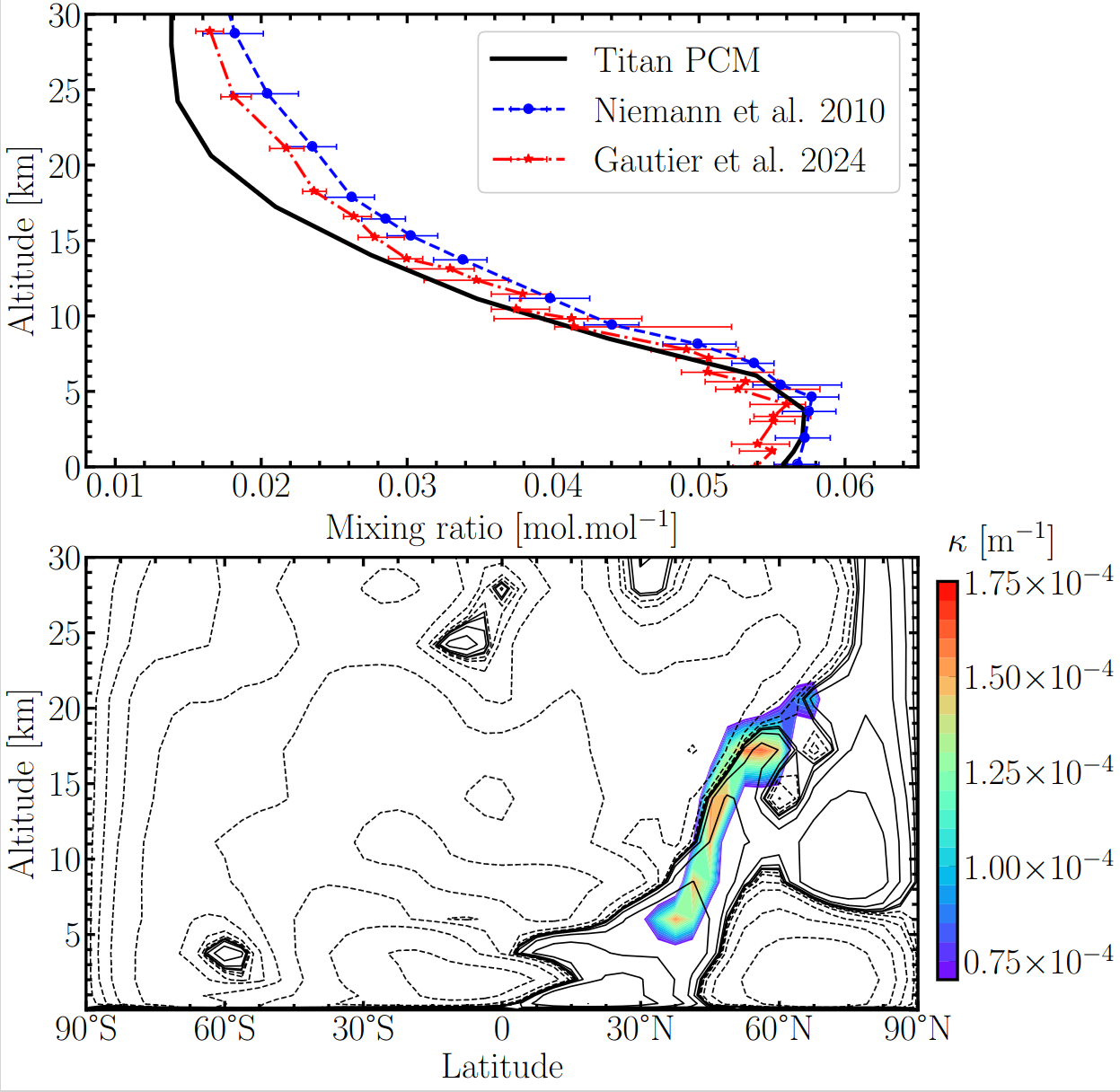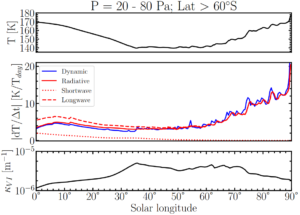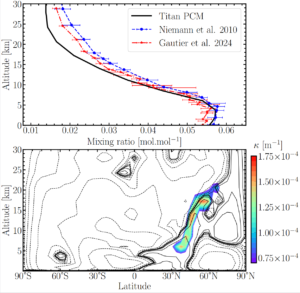[LMD publishes] Titan’s new planetary climate model: study of the seasonal cycles of Titan’s atmosphere.

Bruno de Batz de Trenquelléon, a former PhD student at GSMA (Reims) and LMD (Paris), presents two new studies in The Planetary Science Journal dedicated to the analysis of seasonal cycles in Titan’s atmosphere, using the new Titan-LMDZ planetary climate model (PCM) (de Batz de Trenquelléon et al. 2025 a., de Batz de Trenquelléon et al. 2025 b.). These studies detail, on the one hand, the model’s new radiative transfer module, based on the k-correlated method, and the updated photochemical scheme; and, on the other hand, the development of the microphysics module for haze and clouds, now including the methane cycle. The coupling of all these new modules enables us to better take into account the feedbacks of atmospheric components on the thermal and dynamic structure of the atmosphere.
The first study focuses on the control of the thermal structure of the polar regions and the inversion of the equinox circulation. The results confirmed that the radiative destabilization observed by Cassini in the lower polar stratosphere at the end of winter results from a dynamic interaction between haze and gas distribution, which together influence thermal structure. The second study reveals an atmosphere structured in several layers, each following a distinct seasonal cycle. The haze is subject to pole-to-pole stratospheric circulation. Lower down, between 30 and 90 km altitude, cold regions favor the condensation of minor species, forming a persistent layer of condensed fog. Finally, methane clouds form between 5 and 25 km, within updrafts, while polar clouds appear higher up (between 65 and 330 km) at the winter pole, following enrichment in trace compounds.



